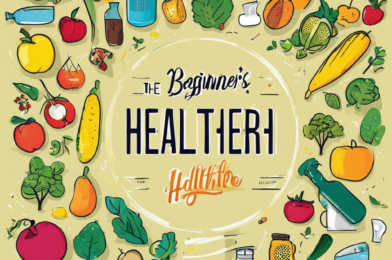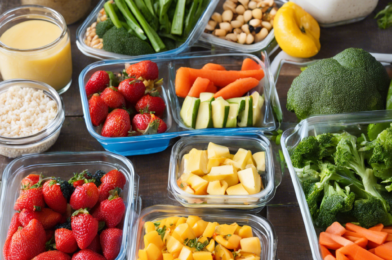Are you feeling like your diet needs a nutritional boost? It’s easy to get caught up in busy schedules and opt for convenience foods, but making small changes can significantly impact your health. By incorporating nutrient-dense foods into your daily meals, you can enhance your overall well-being and energy levels. Here’s how you can effortlessly transform your diet into a powerhouse of nutrition.
1. **Embrace Colorful Fruits and Vegetables:** Think of your plate as a canvas and aim for a vibrant palette. Include a variety of colorful fruits and veggies like deep green spinach, sunny yellow bell peppers, ruby red beets, and bright orange carrots. These colors signify different phytochemicals and antioxidants, providing an array of health benefits. A simple trick is to choose produce with intense colors; the more colorful your plate, the more nutrients you’ll consume.
2. **Choose Whole Grains Over Refined:** Swap out refined grains like white bread and pasta for whole-grain alternatives. Whole grains retain all parts of the grain, including the nutrient-rich germ and bran. They are packed with fiber, vitamins, and minerals, which are essential for maintaining a healthy digestive system and keeping you full and satisfied. Opt for brown rice, quinoa, whole wheat bread, and oats to boost the nutritional value of your meals.
3: **Incorporate Healthy Fats:** Not all fats are created equal. Include sources of healthy fats like avocados, nuts, seeds, olive oil, and fatty fish (such as salmon) in your diet. These foods provide essential fatty acids like omega-3 and omega-6, which are crucial for brain health, reducing inflammation, and supporting heart health. A drizzle of olive oil on your salad or a handful of almonds as a snack can go a long way in improving your nutrient intake.
4. **Prioritize Lean Proteins:** Protein is an essential building block for our bodies, and choosing lean protein sources ensures you get the maximum nutritional benefit. Opt for skinless chicken breast, turkey, fish, legumes, and tofu. These foods provide essential amino acids without the saturated fat content found in fatty cuts of meat.
5. **Snack Smart:** Instead of reaching for processed snacks, opt for nutrient-dense alternatives. Greek yogurt with mixed berries, celery sticks with nut butter, or a handful of homemade trail mix are excellent choices. These snacks provide sustained energy and essential nutrients to keep you going between meals.
Making your diet more nutrient-dense doesn’t have to be complicated. By focusing on colorful produce, whole grains, healthy fats, lean proteins, and smarter snacking options, you can easily transform your eating habits. Remember, small changes can lead to significant health improvements, so start incorporating these simple tips into your daily routine and feel the difference in your energy levels and overall well-being.









